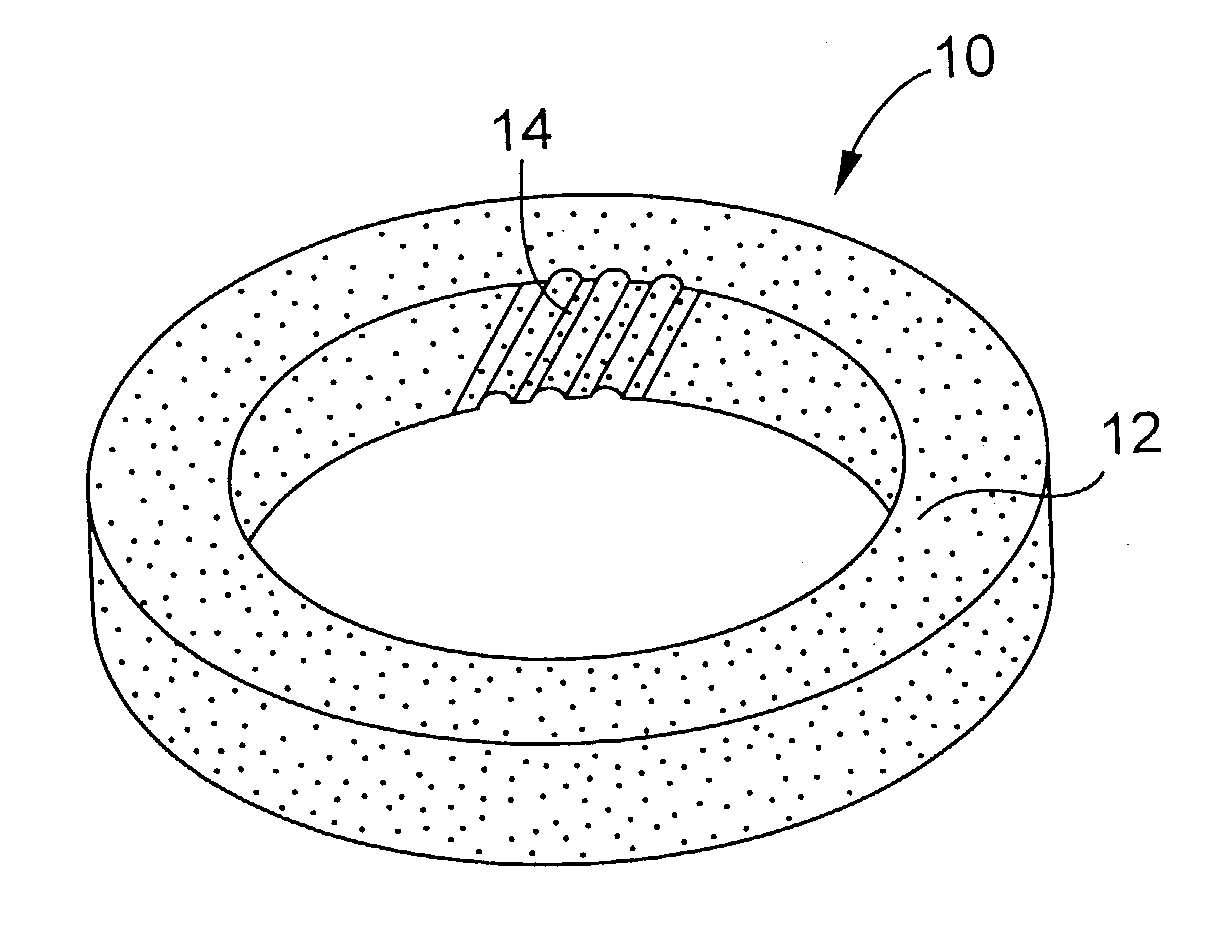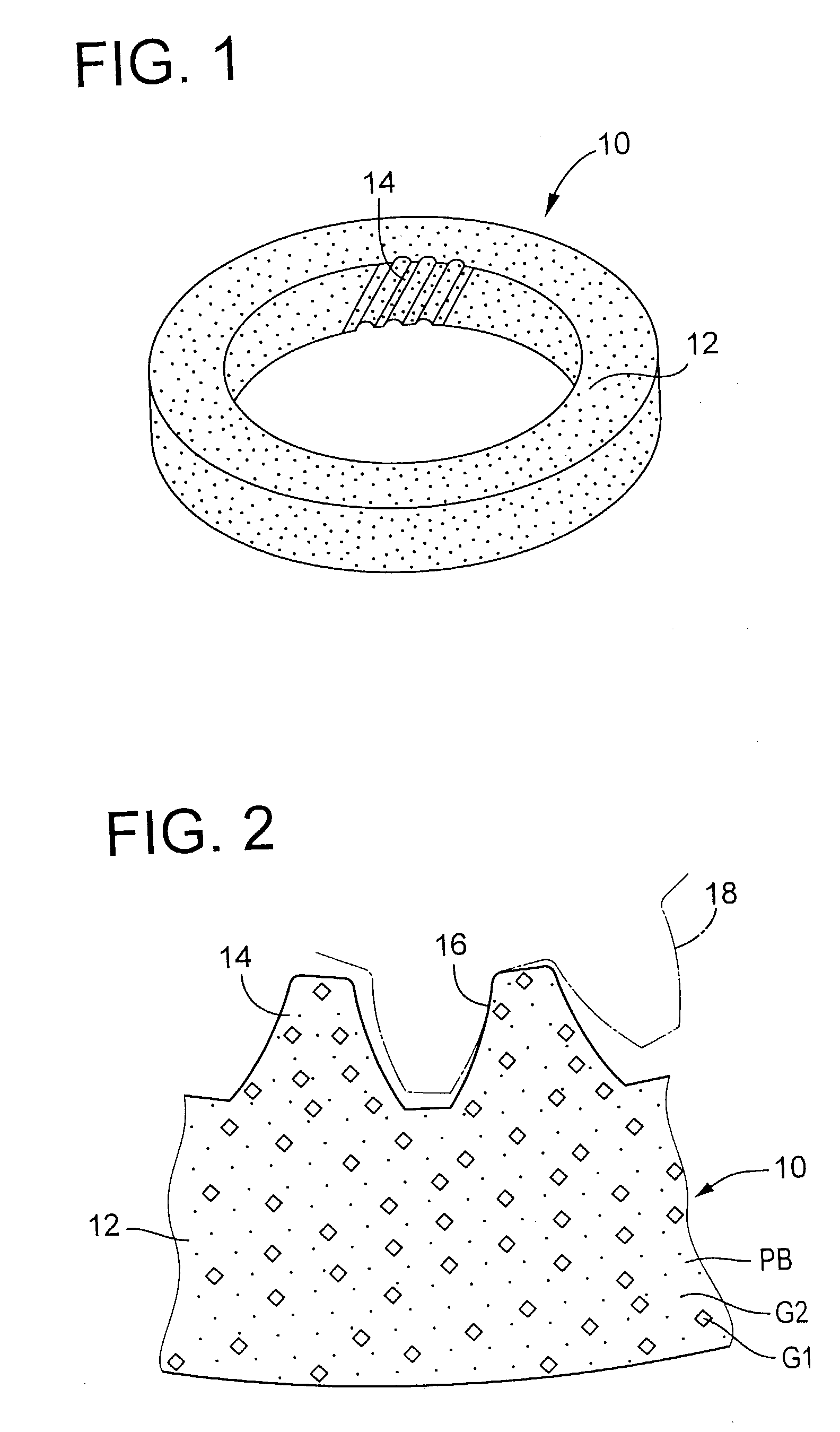Grindstone having resinoid abrasive structure including abrasive agglomerates each provided by vitrified abrasive structure
- Summary
- Abstract
- Description
- Claims
- Application Information
AI Technical Summary
Benefits of technology
Problems solved by technology
Method used
Image
Examples
Embodiment Construction
, each containing the abrasive agglomerates G1, are different in content of the abrasive agglomerates G1 in the resinoid abrasive structure and in structure of each abrasive agglomerate G1. The abrasive agglomerates G1 of each of Examples 1-9 were obtained by crushing a vitrified grindstone into pieces, wherein the vitrified grindstone has a vitrified abrasive structure in which the first abrasive grains Gs in the form of WA (white alundum) grains are held together by the inorganic bond Gb. Table 2 indicates (a) the size of each of the first abrasive grains Gs included in each abrasive agglomerate G1, (b) the content of the inorganic bond Gb in each of the abrasive agglomerates G1 and (c) the content of the abrasive agglomerates G1 in the resinoid abrasive structure in each of Examples 1-9.
2TABLE 2 (c) Content of Abrasive Agglomerates (a) Size of Abrasive (b) Content of G1 Grains Gs included Inorganic Bond Gb in Resinoid in each Abrasive in each Abrasive Abrasive Agglomerate G1 Aggl...
PUM
| Property | Measurement | Unit |
|---|---|---|
| Fraction | aaaaa | aaaaa |
| Fraction | aaaaa | aaaaa |
| Fraction | aaaaa | aaaaa |
Abstract
Description
Claims
Application Information
 Login to View More
Login to View More - R&D
- Intellectual Property
- Life Sciences
- Materials
- Tech Scout
- Unparalleled Data Quality
- Higher Quality Content
- 60% Fewer Hallucinations
Browse by: Latest US Patents, China's latest patents, Technical Efficacy Thesaurus, Application Domain, Technology Topic, Popular Technical Reports.
© 2025 PatSnap. All rights reserved.Legal|Privacy policy|Modern Slavery Act Transparency Statement|Sitemap|About US| Contact US: help@patsnap.com



